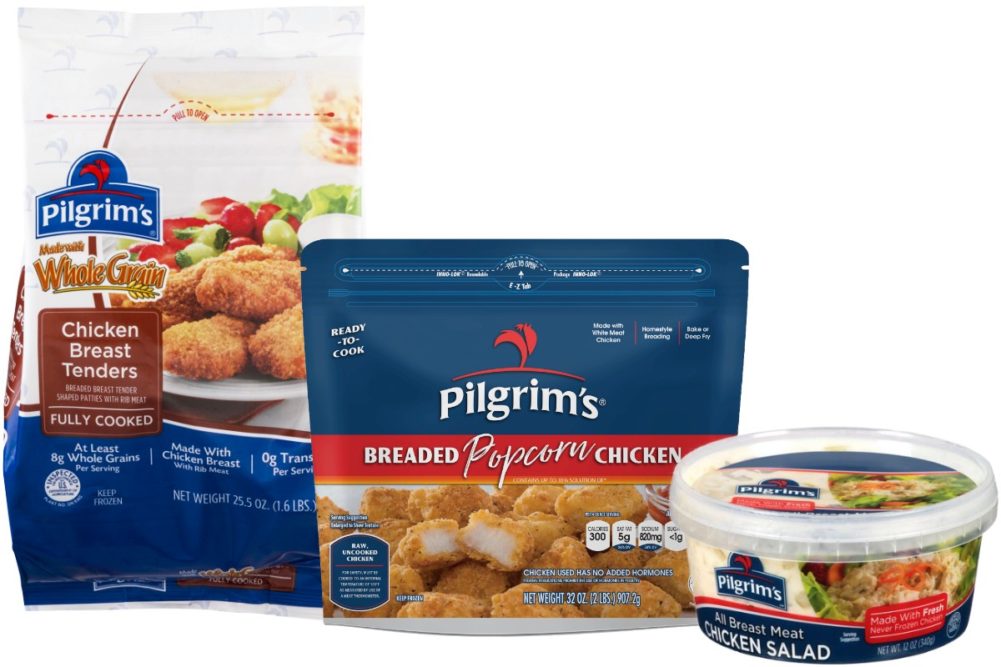GREELEY, COLO. – Executives at Pilgrim’s Pride Corp. credited the company’s agility and changing product mix for enabling the company to quickly adapt to shifts in channel demand brought on by the coronavirus (COVID-19) pandemic.
The pandemic spurred volatile and challenging market conditions in the company’s US fresh chicken business during the first quarter of 2020, said Jayson Penn, chief executive officer at Pilgrim’s Pride. Speaking to analysts during a call to discuss financial results, he said the first half of the quarter was mostly in line with normal seasonality. But by March, the pandemic drove the fastest-ever demand shifts to retail from foodservice.
“Despite the sharp decline in foodservice requirements, we were able to quickly respond to the shift in channel demand by increasing our volume mix to key customer retailers,” Penn said. “A large portion of our foodservice customers are within the QSR segment, which further dampened the impact across our fresh business units.
“Within the less commoditized small bird in case ready segments, market supply and demand balance were better during Q1. Demand from our retailers is very strong. Our case ready business, in particular, has continued to be much more stable during the quarter in generating great results, driven by strong demand for our chickens, especially key customers.”
For the three months ended March 29, 2020, Pilgrim’s recorded net sales of $3.07 billion, an increase of 12.9% from $2.7 billion recorded in the first quarter of 2019.
Penn said first quarter retail volume demand for Pilgrim’s case ready, Just BARE chicken, including those online through Amazon, jumped 81% compared to last year. Online sales increased 205% compared with the same period a year ago, and momentum is increasing with volumes surging 498% in the last four weeks, he added.
“Our market leadership in these categories and more differentiated product portfolios have continued to strengthen the growth of our competitive advantage versus the industry,” Penn said. “While the commitment to our key customer strategy has been reflected in the consistency of our past results, the value of this approach has never been more relevant to our growth than during the current period of uncertainties and challenges.”
Net income for the first quarter was $67.3 million (including a one-time 9¢ per share gain on case settlement), or 27¢ per diluted share, down from $84 million, or 34¢ per diluted share in 2019.
Growth in Pilgrim’s Prepared Foods business in Mexico continued to outperform expectations.
“We continue to lead in developing the market in Prepared Foods in Mexico by launching significantly more products to meet demand,” he said. “We are making great advances in our Prepared Foods business with innovation as the core competency of our strategy.
“We are generating excellent results under premium Pilgrim’s and Del Dia brands, both of which have continued to receive very favorable acceptance by customers at retail club stores and QSRs.”
He noted that the Prepared Foods performance partially offset the impact of weak macro conditions in Mexico which persisted longer than expected
“Chicken prices, especially in traditional markets, were well below seasonal expectations before reverting to reach closer to normal levels by the end of the quarter,” Penn said.
“Our increased share of non-commodity products, strong execution and growth in Prepared Foods have all helped to partially offset the market weakness. We continue to believe in long-term growth and demand prospects in Mexico.”
Moy Park moves on
Penn said the Moy Park business is “above the average in the competition in Europe,” despite experiencing the slowdown in foodservice demand in the last month of the first quarter.
“With some foodservice operator closure starting in Europe during March and with UK foodservice now completely closed also, we are expecting some deceleration in our volumes and results in Q2,” he said. “Despite the partial offset, we start to see an increase on the retail side of our operations. We’re taking the appropriate measures and implementing actions to mitigate this impact as much as possible.”
Robust demand at retail is generating increasing positive EBITDA, Penn said, which is partially offset by a reduction in foodservice demand. Also helping results in Europe is continuing strength in pork exports to China.
“Exports to China were up by more than 80% in Q1 and we’re seeing improved momentum leading into Q2,” he explained. “All of our European fresh pork facilities are approved for China. So, we’re well positioned to benefit from export opportunities. We also continue to evolve in our strategy, and we will significantly increase our volumes with new key customers in the next quarters.”
Consumers choose chicken
Pilgrim’s expects retail demand for chicken to remain strong while consumers continue to eat at home and restrict their restaurant visits. Foodservice demand will likely remain volatile, the company said, at least in the near-term, until the channel normalizes
Penn said the company is well balanced in terms of bird size, and Pilgrim’s will continue to incrementally diversify the company’s product mix while reducing the commodity portion of its portfolio. To do this, Pilgrim’s plans to increase the number of differentiated products to key customers while pursuing operational improvement targets.
However, the company will not be transitioning one of its large bird plants to small bird processing. In response to an analyst’s question about the transition, Penn said the right thing to do now is wait.
“So, we made the decision to and the right decision to push that off,” Penn said. “And we’ll most likely bring that up in the first quarter of 2021. But until we see the environment clearing up, we’ll push that off.”
Penn added there will be slight cutbacks in volumes in the upcoming quarters because Pilgrim’s is moving headcount from big bird to its case ready business.



